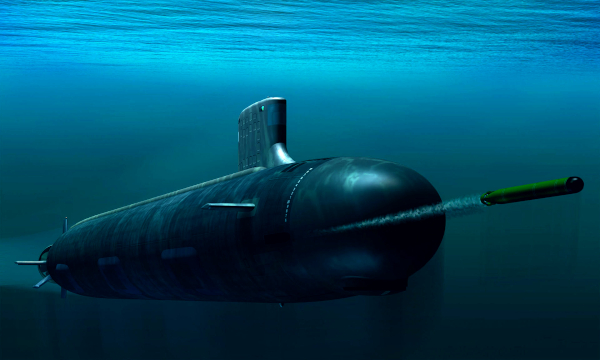The submarines deployed in forward areas to showcase India’s interest in the Indian Ocean Region (IOR) is critical but the underwater operations carry many risks. However, seawater profile for detection of underwater routes by the submarine’s navigational sonars etc., are a matter of concern. Denial of access to unauthorised vessels inside India’s Offshore Development Area is a major challenge, with warships and submarine involved in the robust surveillance arrangement.
These submarine operations can provide high-quality ISR (Intelligence, Surveillance and Reconnaissance) information during peace times and this capability comes from the submarine’s ability to enter an area to watch, listen and to collect the information because it can operate stealthily close to the action they can capture many elusive signals.
In recent times, Chinese military and commercial facilities have emerged along its sea line of communication through strategic investments in several Indian Ocean ports (like Gwadar, Hambantota, and Colombo etc.). This potential Chinese intention in the IOR is geopolitically known as String of Pearl’s theory. The protection and safeguard of all present or evolving economic assets fall within the ambit of Indian Navy’s Flag Officer Defence Advisory Group (FODAG). The FODAG’s role is to advise various ministries — Defence, Petroleum & Natural Gas and Shipping on all planning and policy aspects of offshore security and defence covering EEZ, territorial waters and other Maritime Zones of India.
Diving Support Vessels
Indian Navy regularly conducts deep sea diving operations, including in the IOR, with an aim to undertake submarine rescue exercise, actual undersea inspection or salvage operations. The Saturation divers are specialized deep-sea divers who carry out such highly complex diving operations, usually with the assistance from a Diving Support Vessel (DSV). “This unique vessel has Deck Decompression Chambers where divers are compressed to the required depth and then transferred under pressure to a Diving Bell, which is further lowered into the sea. Underwater, these divers are provided a heated gas mixture of oxygen and helium for breathing and hot water for maintaining body temperatures. With every 10 meters depth, the water pressure on the Saturation diver increases by a kilogram per centimetre square, causing physiological problems like gas bubbles throughout the human body while surfacing. Once at the surface, these divers undergo a ‘decompression’ routine inside specialized chambers installed onboard the DSV,” explains Milind Kulshreshtha, C4I expert.
Deep Submergence Rescue Vessels
Keeping an active watch over an ‘area of interest’ closer to hostile coastline requires an enhanced shallow water submarine operation. Though submarine provides a significant strategic advantage here, it is also vulnerable to action damage and requires critical follow-up diving operations for the Search and Rescue mission. C4I expert, says, “This role is amply supported by a Deep Submergence Rescue Vessel (DSRV), and is the much-required re-assurance to the crew onboard the submarine undertaking risky manoeuvres. Earlier unfortunate incidents like Russian Kursk submarine sinking and fire accident onboard INS Sidhuratna, had also highlighted the need for a submarine rescue vessel. India’s first DSRV procured from the UK completed Navy’s Sea Acceptance Trials successfully in June’2019. The trials involved an underwater ‘mating’ of the DSRV with a hatch of a submerged submarine to carry out a personal transfer. The hatch of the submarine was duly strengthened earlier as per directives of Submarine Design Directorate at Naval Headquarter, so as not to buckle with the additional load of DSRV.”
What are they equipped with?
“These DSRVs are equipped with sophisticated sonar systems and an ROV (Remotely Operated Vehicle) to clear debris and various other obstructions underwater. It has a Side Scan Sonar for locating the position of the submarine in distress at sea, and can use its ROV (Remotely Operated Vehicle) to assist the rescue operations. And can be transported rapidly to the mission area via air, sea or land,” he explains.
According to the Indian Navy the DSRV can recover submarine crew from depths up to 650m and Navy intends to position one each on West and East Coast, respectively.
Centre of Regional Excellence for Submarine Rescue
As has been reported by Financial Express Online earlier, India is part of a select league of nations which possess the capability to rescue submarines, including that of friendly nations in the IOR. India has the ambition to emerge as the Centre of Regional Excellence for Submarine Rescue missions and accordingly, apart from procuring the additional DSRVs is undertaking indigenous construction of two 7,650 ton Diving Support Vessels (DSVs) at Hindustan Shipyard Ltd. (HSL) to further augment the submarine support operations. It is planned to fit a DSRV onboard each of these new induction DSVs. Overall, the induction of DSVs and DSRVs by Navy shall go a long way in enhancing India’s regional role of being the nodal agency in IOR for submarine rescue.
Source: FE
Image Courtesy: National Interest
You may also like
-
IAF Aircraft Set Course For Exercise Eastern Bridge VII At Oman
-
IAF Set To Host The Indian Defence Aviation Exposition-II At Jodhpur
-
Defence Secretary to co-chair 5th India-Philippines Joint Defence Cooperation Committee meeting in Manila
-
Simultaneous Launch Of ‘malpe And Mulki’, Fourth And Fifth Ships Of Asw Swc (Csl) Project
-
Aatmanirbharta in Defence: MoD signs Contract with HAL for 240 AL-31FP Aero Engines for Su-30MKI Aircraft
